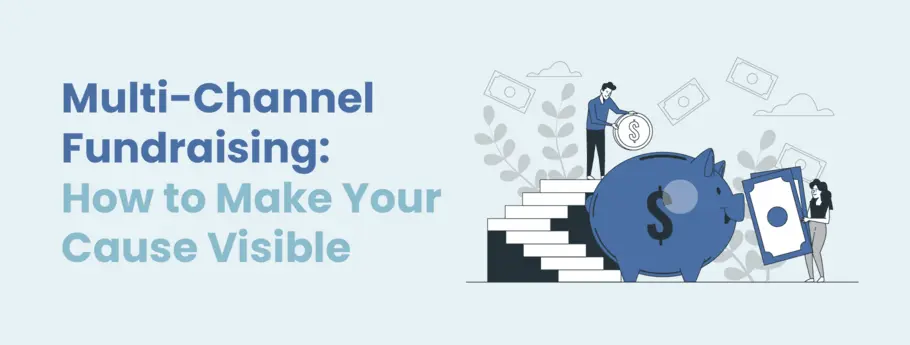Online Fundraising: Effective Digital Campaigns for Nonprofit Success
Online Fundraising: Effective Digital Campaigns for Nonprofit Success
Blog Article
Comprehending the Important Elements of Nonprofit Fundraising: Key Practices for Enhancing Monetary Sustainability
Nonprofit fundraising is a multifaceted venture that calls for a nuanced understanding of a number of vital elements to guarantee economic sustainability. From strategic planning that straightens with mission-driven objectives to the farming of meaningful donor relationships, each component plays an important duty in the general success of fundraising efforts.
Strategic Fundraising Preparation
Strategic fundraising planning is an essential component for any kind of nonprofit organization aiming to accomplish its goal properly. This procedure includes establishing clear, quantifiable objectives that line up with the organization's general objectives while thinking about the special requirements of the area it offers. A well-structured fundraising strategy not just identifies potential profits resources but likewise describes the methods and methods essential to involve those resources.

Moreover, leveraging data analytics can notify decision-making by offering insights into donor actions and fads, allowing nonprofits to tailor their fundraising methods accordingly. Normal reviews and updates of the fundraising plan are vital to react to changing situations and emerging possibilities. Ultimately, a comprehensive calculated fundraising strategy acts as a roadmap for nonprofits, promoting monetary security and allowing them to accomplish their objective effectively.
Structure Benefactor Relationships
Building strong donor relationships is important for the long-term sustainability of any not-for-profit company. These relationships are the structure whereupon effective fundraising efforts are developed, as they foster trust, loyalty, and involvement amongst supporters. Nonprofits need to focus on growing purposeful links with their donors, identifying that each interaction can considerably affect their readiness to contribute.
To effectively build donor relationships, organizations need to concentrate on individualized interaction techniques. This includes recognizing the rate of interests, motivations, and offering patterns of private donors, enabling customized communication that reverberates with them. Normal updates on organizational development, program results, and the effect of contributions reinforce the value of their assistance.
In addition, expressing gratefulness is important. Acknowledging donations quickly and truly not just improves relationships but likewise encourages continuous support. Occasions such as contributor gratitude events give opportunities for individual links and area structure.
Eventually, nurturing donor relationships transcends transactional interactions; it embodies a collaboration where donors really feel valued and essential to the mission. By spending time and resources in relationship-building, nonprofits can enhance contributor retention, rise lifetime providing, and ensure economic security for their campaigns.
Efficient Interaction Techniques
Effective communication approaches play a pivotal duty in enhancing the strong benefactor partnerships that nonprofits strive to cultivate. Consistent and clear messaging is crucial for sharing the goal, vision, and impact of the company. Articulating the special worth proposition helps contributors comprehend just how their contributions make a substantial distinction.
Using several communication networks-- such as e-mails, social media sites, e-newsletters, and in-person events-- guarantees that messages get to a varied audience - nonprofit agency. Customizing communication to different benefactor sections can boost interaction; as an example, major donors may appreciate thorough records on financing allowances, while smaller benefactors might like succinct updates highlighting key achievements
Storytelling is an additional effective tool in not-for-profit communication. Sharing engaging stories about recipients can stimulate psychological responses and promote a much deeper connection with the cause. Transparency concerning financials and program outcomes constructs trust, urging donors to remain involved in time.
Involving the Neighborhood
Community engagement is vital for nonprofits seeking to amplify their influence and foster a feeling of possession amongst neighborhood stakeholders. Establishing a robust link with the neighborhood not only improves visibility but likewise constructs count on, important for lasting fundraising efforts. By proactively including community participants in decision-making processes, nonprofits can straighten their objectives with the requirements and goals of the population they serve.
To properly engage the area, nonprofits ought to prioritize openness and he said open communication. Holding public discussion forums, workshops, and informative sessions enables purposeful dialogue, where stakeholders can voice their point of views and add to Full Report the company's vision. Additionally, working together with regional businesses, schools, and public organizations can develop collaborating collaborations that leverage shared resources for higher effect.
One more important aspect of community interaction is identifying and commemorating regional payments. Acknowledging contributors, advocates, and volunteers cultivates a sense of belonging and commitment, motivating ongoing participation. Additionally, showcasing success stories and the concrete benefits of community support can inspire others to contribute.
Ultimately, proactive neighborhood interaction grows a network of advocates that are invested in the not-for-profit's goal, guaranteeing long lasting assistance and enhanced economic sustainability.
Utilizing Innovation and Devices

One necessary device for nonprofits is a detailed donor administration system. These platforms make it possible for companies to keep thorough documents of benefactor communications, contributions, and choices, assisting in personalized interaction and involvement (nonprofit agency). Moreover, utilizing on-line fundraising platforms enables nonprofits to reach a broader audience, making it easier for supporters to contribute with numerous networks, including social networks and email campaigns
Additionally, the use of project administration devices can help simplify internal procedures, making sure that fundraising groups stay arranged and focused on their objectives. Automation software can additionally streamline repeated jobs, such as sending out thank-you emails or reminders, maximizing team time for even more critical campaigns.
Final Thought
In final thought, the essential components of not-for-profit fundraising include tactical preparation, strong contributor relationships, effective interaction, neighborhood involvement, and the utilization of modern technology. These elements collectively contribute to enhancing economic sustainability and strength within nonprofit organizations.
Additionally, leveraging information analytics can notify decision-making by giving understandings right recommended you read into contributor actions and fads, allowing nonprofits to tailor their fundraising techniques appropriately.Building strong donor relationships is crucial for the lasting sustainability of any type of nonprofit organization.Effective interaction strategies play a crucial function in reinforcing the solid donor relationships that nonprofits aim to grow.One crucial device for nonprofits is a thorough donor monitoring system.In verdict, the essential elements of nonprofit fundraising encompass critical preparation, strong donor relationships, efficient interaction, community involvement, and the usage of technology.
Report this page